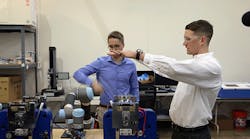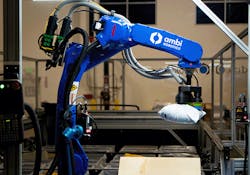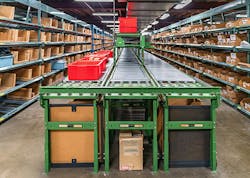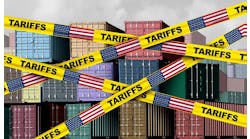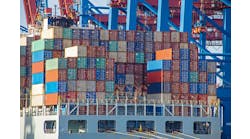The supply-chain disruption has disrupted many suppliers’ abilities to obtain or distribute automation components and devices, especially amidst the lingering effects of the global economic slowdown.
“With regard to the ongoing pandemic and geopolitical risk, there have been severe changes with our customers’ supply chains, both in the companies that manufacture and distribute automation components and devices and those that buy and consume these components,” says James Zhang, vice president of market development and connected operations at PTC. “Manufacturers are evolving their strategies from cost-centric to both cost- and risk-centric, which is achieved by building a resilient model that responds to supply disruption and demand volatility. Everything is about capacity: manufacturers pilot and scale production by reengineering their businesses with an emphasis on increased agility and flexibility.”
Also read: COVID-19 pandemic impacts supply chain, Industry 4.0 and 5G
Manufacturing companies have had to transform and accelerate their adoption of digital technologies, resulting in more flexibility and agility, with an ability to unlock more capacities, explains Zhang. “Although COVID-19 continues to further complicate these advancements, these changes have allowed companies to better respond to the supply-chain disruption,” he says.
“Supply chains worldwide have been disrupted over the past two years,” says Jim Wilmot, manager, Simatic PLC products, Factory Automation business unit, Siemens Industry. “Shipping backlogs are affecting logistics widely, even if there is no scarcity in a specific supply chain; it is probably still behind due to the knock-on effects.”
Like everyone globally, Siemens has been affected, too. “We’ve been working diligently to facilitate our logistics and distribution systems and have made good progress,” says Wilmot. “We’ll continue to streamline logistics and make optimizing our supply chains a focal point as the world shipping situation normalizes.”
The supply chain shortages have certainly placed additional emphasis on forecasting and inventory management for nearly all companies, says Aric Prost, senior global director OEM at Stratus Technologies. As an example, Stratus’ supply-chain team worked months out to prepare for its new, second-generation computing platform, which began shipping in December. “The team did beyond a commendable job planning for this product release, and as a result, we are shipping these edge platforms to customers on our standard two-week delivery service-level agreement (SLA),” says Prost.
“The COVID-19 outbreak has caused a major shakeup, no doubt about it,” says Joe Campbell, senior manager of applications development and strategic marketing at Universal Robots. “This is a time when the robustness of our supply chain is seriously challenged. Fortunately, we already had a dual-source supply chain in place, which meant that when China started shutting down, we weren’t as vulnerable and had options to get the same parts elsewhere.” As a result, Universal Robots has not had any disruptions to operations, and its production capacity remains intact, explains Campbell (Figure 1). “Getting to this point, redirecting the supply chain, has definitely taken an unfathomable amount of agility and due diligence,” he admits. “We are constantly trying to look further ahead now, getting purchase orders out for raw material earlier and closely examining not just our own suppliers but also taking a look at their second-, third- and fourth-tier suppliers to make sure they can deliver, as well. As a result, we have not had to re-engineer any of our robot models.”
The supply-chain disruption has resulted in longer lead times, explains Tim Fredricks, channel sales manager, Advantech. “However, having a diverse set of options and working closely with our partners and customers has minimized the impacts of delays,” he says.
“We have certainly faced supply challenges and extended lead times like everyone else,” explains Ken Bradley, president, Allied Electronics & Automation. “This has created an environment where service reliability can be challenged, elevating the importance of human-touch engagement with customers, managing expectations and helping customers to find alternative solutions to meet their needs.”
At the beginning of the supply-chain crisis, lead times were extremely unpredictable and all types of components were unexpectedly affected, explains Stephen McKinley, co-founder and vice president of operations at Ambi Robotics. “Almost everyone is familiar with the phrase, ‘chip shortage,’ as it has driven up the price of used cars and computers,” he says, “but one disruption most aren’t aware of is the shortage of resin. Resin is in all sorts of components, such as cables, connectors, acrylic panels and zip ties. When this shortage hit, we witnessed a scramble within suppliers’ networks, where competitors were buying up the entire stock of a certain component to try to hedge their production commitments. We had seen this panic-buying happen to toilet paper in our local supermarkets and were surprised to see it extend to the automation industry. A cable that was previously available within 14 days suddenly became a 40-week lead time. We were able to overcome this by buying the raw, unterminated cable materials and fabricating our own connectors in order to meet our customer commitments.”
Figure 2: Now that we are well into the second year of the pandemic, supply-chain disruption has somewhat stabilized and there’s less panic-buying happening, but the lead times on components has remained high.
Now that we are well into the second year of the pandemic, supply-chain disruption has somewhat stabilized and there’s less panic-buying happening, but the lead times on components has remained high, says McKinley (Figure 2). “To overcome this problem and to continue meeting our customer promises we have shifted our designs away from esoteric cabling and standardized our manufacturing model around easily procured materials,” he explains. “We have fundamentally changed the way we think about being a fast-paced business; to be adaptive and reactive in the present, we need to plan for resilience and redundancy in our bill of materials.”
While automation products are certainly not immune to the supply challenges, they don’t have quite as many components in them as some of the consumer products, explains Eric Wendt, director of automation and electrical products for Digi-Key Electronics. “So, while lead times for automation products have been extended a bit, and it may be more difficult to get the volume you have previously received, they’re not at the point where they’re on allocation, like some other commodities and raw materials,” he notes.
“The impact of the supply-chain disruption has been significant,” emphasizes Brandon Ellis, owner and president of elliTek. “While initially varied in terms of product availabilities and missed shipments, it continues to worsen showing little signs of relief.”
From robots to HMIs, few of elliTek’s vendors have been able to manage the effects, says Ellis. “There have only been two with the insight allowing them to break from the traditional just-in-time (JIT) manufacturing model and get ahead of the shortages,” he states. “Despite their best efforts, however, even they are now starting to feel the effects. My personal projection is the supply-chain shortages will likely worsen and continue well into 2022.” This is bad news for all involved—from manufacturers through suppliers and down to end users, warns Ellis.
“Supply chain disruptions and inflation have created considerable challenges in obtaining materials on time and at the same cost,” says Lance Fuhr, director of channel excellence, Honeywell Process Solutions.
“2021 was a challenging year in many ways and the disruptions in the world’s supply chain of automation components was a real eye-opener for distributors, manufacturers and OEMs alike,” warns Brian Jaeger, technical content developer, Maple Systems.
“Supply-chain disruption in our case has been minimized by our global footprint and ability to tap into various resources to mitigate supply-chain issues,” says Bob White, technical sales manager, Nippon Pulse. “In addition, where customer specifications dictate components that are affected by supply shortages, we collaborate with those customers and find solutions that overcome the supply-chain roadblocks.”
The biggest impact has been on products that use semiconductors and linear guide rails, agrees Freeman Smith, founder, Nufactur. “The trouble is that these two technologies are fundamental to a lot of other products. For example, an electric actuator will be delayed because the manufacturer is waiting on the linear guide that makes up the bearing structure. Some of the supply-chain issues appear global to the end user but are actually happening at a more regional level. For example, we've seen longer delays on electronic components coming from Japan or Europe as compared to Southeast Asia. This is due to the shorter supply chain from semiconductor manufacturers based in Taiwan,” explains Smith.
“Our supply-chain team has done an outstanding job, so we have only had to move from two days lead time to seven days,” says Kristian Hulgard, general manager, Americas, OnRobot. “The disruption made us shift our supply planning from four weeks out to a full year ahead to make sure that we have all the materials needed for the more than 40 different products that we will be manufacturing.”
Figure 3: As the global supply chain crisis worsened, Opto 22 ultimately was affected by how fast it could build and deliver products to customers and distributors.
Initially, Opto 22 was able to maintain its normal product lead times rather well, says Arun Sinha, director of business development, Opto 22. “For any given part number, we follow a 1-1-1 inventory management system based on the run rate: one month’s finished goods, one month’s work-in-progress and one month’s raw materials,” he explains.
As the global supply chain crisis worsened, Opto 22 ultimately was affected by how fast it could build and deliver products to customers and distributors, explains Sinha (Figure 3). “Some of the ways we have had to adapt are to review our raw material costs and availability at an unprecedented frequency, find alternative suppliers when possible, pay higher prices and over-order to account for long lead times from component suppliers,” he says. “We also have been working closely with our customers to find alternate configurations if possible when certain parts are not readily available.”
One thing everyone can agree upon is that 2021 has been a unique year for industry. “Like many manufacturers, we’ve had trouble sourcing components, such as chips, to build a handful of our products,” says John MacDougall, manager of industrial channel sales, Phoenix Contact USA=. “That being said, the hard work and professionalism of our logistics/supply-chain team minimized these issues. The lead-time issues across all automation-component suppliers provided more opportunities for us to engage with new products at new customers. There was a willingness among customers to look at alternate solutions because their primary source couldn’t deliver. Our distribution channel also helped with supply-chain disruptions this year. We had several distributors invest heavily in inventory early in 2021, before we were experiencing the current supply-chain issues. That foresight and investment benefited our U.S. customer base, the distributors who made the investment and Phoenix Contact USA. They took a risk coming out of 2020, and we’re all glad they did.”
